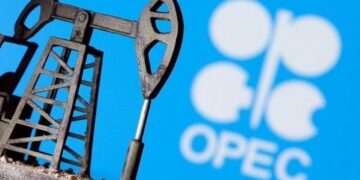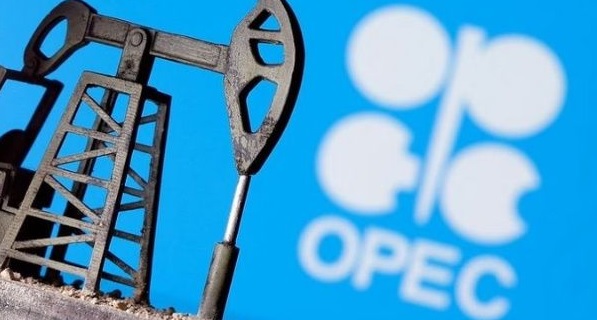By John Ikani
Crude oil output from the Organization of Petroleum Exporting Countries (OPEC) remained stable last month, standing firm before the onset of fresh supply cutbacks by the group and its allies.
A Bloomberg survey, relying on ship-tracking data, information from officials, and estimates from various consultants, including Kpler Ltd., Rapidan Energy Group, and Rystad Energy A/S, unveiled that OPEC pumped an average of 28.05 million barrels a day in December.
Notably, Nigeria played a pivotal role in boosting output by 50,000 bpd, aligning with a renegotiated quota for the upcoming year.
According to the report, Nigeria reinforced its supplies to 1.49 million barrels a day in December, adhering to the revised quota. Meanwhile, data from the Nigerian Upstream Petroleum Regulatory Commission (NUPRC) showed a production of 1.25 million bpd, as communicated through their “direct communication” channels.
However, secondary sources quoted by OPEC indicated a higher output of 1.37 million bpd in November. The December output figures from NUPRC and OPEC are pending release.
Looking ahead, Bloomberg anticipates a decline in output this month as the broader OPEC+ coalition initiates additional cuts of approximately 900,000 barrels a day.
READ ALSO: Tanzania, Rwanda Joins Africa-wide Recall Of J&J Children’s Cough Syrup
This move aims to counteract a potential surplus and safeguard declining crude prices, which have dropped around 20% in the past four months due to increased supplies from the US and other OPEC rivals.
The United Arab Emirates (UAE) led last month’s reduction efforts, cutting production by 70,000 barrels a day to 3.08 million barrels a day. Despite this reduction, the UAE’s output surpassed both its December quota and a new increased target effective this month.
Angola’s production declined by 40,000 barrels a day to 1.1 million a day in its final month as an OPEC member, following the country’s decision to exit the cartel effective January 1.
Crude traders express skepticism regarding the OPEC+ alliance’s ability to fully implement the fresh supply curbs this month, considering the economic constraints faced by several members. The International Energy Agency (IEA) estimates an actual cut of about 500,000 barrels a day despite the pledged cutback being higher.
Iraq, with a history of inconsistent implementation, faces a substantial challenge, requiring a 290,000 barrels a day reduction to meet its January target. OPEC+ plans an online monitoring meeting on February 1, with in-person ministerial discussions scheduled for June in Vienna.
In a separate projection, Goldman Sachs suggests that oil prices could double if Houthi rebels continue their attacks on commercial shipping in the Red Sea. Daan Struyven, head of the company’s oil research division, highlighted potential disruptions in transit routes, stating that a prolonged disruption could push oil prices three to four dollars higher.
While he deemed the situation “highly unlikely,” Struyven’s comments align with concerns voiced by figures like former Prime Minister and current Foreign Secretary David Cameron, emphasizing the global impact of the ongoing attacks.
Since November, Houthi rebels have targeted commercial shipping in the Red Sea over 20 times, utilizing missiles, drones, fast boats, and helicopters.


































